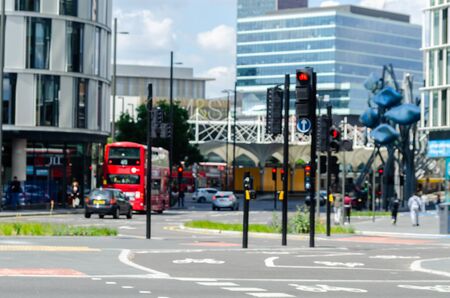Introduction: The State of Health Screenings in Britain
Routine health screenings are a cornerstone of preventive healthcare, enabling early detection and management of conditions such as cancer, cardiovascular disease, and diabetes. Across Britain, these screenings play a critical role in reducing morbidity and mortality rates, ultimately improving overall public health outcomes. However, participation in routine screenings remains inconsistent, with significant disparities evident between urban and rural communities. Recent data from the NHS reveal that while urban centres often benefit from higher participation rates—thanks to proximity to healthcare facilities and greater public awareness—rural populations face unique barriers, including limited access to services and longer travel times. These challenges contribute to lower uptake of essential screenings in rural areas, widening the gap in health equity across the country. Addressing these imbalances is crucial for ensuring that all individuals, regardless of location, can benefit from timely and effective preventive care.
Key Barriers to Screening Access in Rural Areas
Despite the NHS’s commitment to equitable healthcare, rural communities across Britain continue to face notable barriers in accessing routine health screenings. These challenges are multi-faceted, encompassing logistical, economic, and cultural dimensions that collectively contribute to persistent health inequalities between urban and rural populations.
Logistical Hurdles
The geographical spread of rural regions often means fewer healthcare facilities and longer travel distances for residents. According to the 2023 NHS Digital Health Survey, over 35% of rural respondents reported travelling more than 10 miles to access screening services, compared to just 8% in urban areas. Limited public transport options further compound these difficulties, especially for elderly or mobility-impaired individuals.
| Factor | Rural (%) | Urban (%) |
|---|---|---|
| Travel over 10 miles for screening | 35 | 8 |
| Lack of public transport options | 28 | 6 |
| Delayed appointment availability | 21 | 12 |
Economic Constraints
Financial limitations also play a significant role. While NHS screenings are free at the point of use, associated costs such as travel expenses and lost wages due to time off work can be prohibitive for those in lower-income rural households. Public Health England’s recent survey found that 18% of rural participants cited cost-related issues as a reason for missing or delaying screenings, double the rate seen in urban settings.
Cultural and Social Considerations
Cultural factors are equally influential. In some rural communities, there is a lower perceived risk of certain health conditions, leading to reduced engagement with preventative services. Stigma around specific screenings (such as cervical or mental health checks) remains prevalent in more traditional or close-knit communities, discouraging individuals from attending appointments. Additionally, limited digital literacy and broadband access hinder awareness of available services and online booking systems.
The Cumulative Impact on Health Outcomes
Taken together, these barriers result in delayed diagnoses and poorer health outcomes for rural residents. Data from the Office for National Statistics show that uptake rates for breast, bowel, and cervical cancer screenings remain consistently lower in rural areas by up to 15 percentage points compared with urban counterparts. Addressing these gaps requires targeted interventions that acknowledge and respond to the unique realities faced by Britain’s rural communities.

3. Urban Advantages and Challenges
Urban residents across Britain undeniably benefit from the close proximity of healthcare facilities. The density of GP practices, clinics, and hospitals in cities such as London, Manchester, and Birmingham enables easier physical access to routine health screenings compared to more remote regions. For many, this translates into shorter travel times, a wider choice of providers, and greater opportunities for early detection of health conditions. However, these advantages are counterbalanced by distinct urban challenges that can undermine participation rates.
Appointment Backlogs and Overstretched Services
While urban areas boast a higher concentration of healthcare resources, they also contend with significant demand. Larger populations put pressure on appointment availability, often resulting in long waiting times for screenings such as cervical smears or blood pressure checks. NHS data repeatedly shows that appointment backlogs in metropolitan surgeries can lead to delays in preventive care, sometimes discouraging residents from following up on reminders or rebooking missed appointments.
Socioeconomic Inequalities
The urban landscape is marked by stark socioeconomic contrasts. Although services may be physically accessible, cost-related concerns—such as lost wages due to time off work or travel expenses for those living on the city’s outskirts—can deter participation among lower-income groups. Data from Public Health England reveals that screening uptake remains lowest in deprived urban boroughs, highlighting how poverty intersects with health outcomes even where infrastructure is robust.
Transience and Population Mobility
High levels of population movement are another hallmark of city life. Frequent changes in address, employment status, or GP registration can disrupt continuity of care. This transience complicates efforts to maintain up-to-date patient records and deliver targeted screening invitations. As a result, some residents—especially younger adults and migrants—may fall through the cracks despite being geographically close to services.
In summary, while urban centres offer logistical advantages for routine health screenings, systemic pressures and social disparities create barriers that must be addressed if Britain’s screening programmes are to achieve equitable reach across all communities.
4. The Role of Technology and Mobile Services
The digital transformation of healthcare has emerged as a critical solution for addressing the disparities in access to routine health screenings between urban and rural Britain. Technological advancements, particularly in telehealth and mobile services, are increasingly narrowing geographical gaps and making preventive care more accessible to underserved communities.
Telehealth: Expanding Access Beyond Traditional Boundaries
Telehealth platforms enable patients in remote areas to consult with healthcare professionals without the need for extensive travel. This not only reduces logistical barriers but also shortens waiting times for initial assessments and follow-up appointments. According to NHS Digital statistics, telehealth consultations increased by over 60% from 2019 to 2023, with rural regions seeing the largest proportional uptake due to improved internet connectivity and targeted outreach initiatives.
Mobile Screening Units: Bringing Preventive Care Closer
Mobile screening units have been deployed across Britain to deliver essential screening services such as mammography, cervical smears, and blood pressure checks directly to communities. These units often target areas with historically low screening rates or limited fixed healthcare infrastructure.
| Screening Type | Urban Uptake (%) | Rural Uptake (%) | With Mobile Units (%) |
|---|---|---|---|
| Mammography | 78 | 64 | 73 |
| Cervical Smear | 83 | 69 | 79 |
| Blood Pressure Checks | 85 | 71 | 80 |
Digital Initiatives: Empowering Patients and Providers
The NHS App and various regional e-health platforms now allow individuals to book appointments, receive reminders, access test results, and engage with self-screening educational resources. These digital tools empower patients to take an active role in their health, while also enabling providers to track participation rates and identify service gaps more efficiently.
Tackling the Digital Divide
While technology offers promising solutions, there remain challenges related to digital literacy and broadband availability—particularly among older adults and in isolated rural locations. Policymakers are investing in community training sessions and infrastructure upgrades to ensure these innovations reach those most in need.
In summary, the integration of telehealth services, mobile screening units, and user-friendly digital platforms is vital for bridging the gap in preventive healthcare access across Britain. Continued investment in these areas is essential to ensure that no community is left behind in the pursuit of better public health outcomes.
5. Community Engagement and Public Awareness
Community engagement and public awareness are pivotal in bridging the divide between urban and rural access to routine health screenings across Britain. Localised interventions, tailored to meet the unique needs of each region, have demonstrated significant potential in increasing participation rates and addressing persistent inequalities.
Grassroots Interventions
Community-based initiatives, such as mobile screening units and pop-up clinics at village halls or community centres, have proven effective in reaching populations who may otherwise face barriers due to distance or limited transportation options. By collaborating with trusted local figures—GPs, parish councils, or faith leaders—health authorities foster a sense of trust and familiarity that encourages residents to attend regular check-ups.
Media Campaigns for Awareness
National and regional media campaigns play a crucial role in disseminating information about the importance of early detection and routine screenings. Utilising traditional outlets like BBC Radio, local newspapers, as well as digital platforms popular among younger demographics, ensures broad outreach. These campaigns often feature relatable stories and testimonials from individuals within the community, which can demystify procedures and reduce stigma associated with certain screenings.
Partnerships with Local Organisations
Collaboration with local charities, schools, employers, and voluntary groups has proven instrumental in raising awareness and facilitating access to health services. For instance, partnerships with agricultural associations in rural counties can help tailor screening schedules around farming seasons, while urban outreach might focus on workplaces or cultural hubs. Such alliances ensure that messaging is culturally relevant and logistically feasible for diverse populations.
The synergy between community-driven initiatives, strategic media engagement, and robust local partnerships creates a comprehensive approach to improving screening uptake. By fostering informed communities and breaking down barriers to participation, these efforts contribute significantly to narrowing the gap in health outcomes between Britain’s urban and rural regions.
6. Policy Recommendations and Future Directions
Data-Driven Policy Suggestions for Equitable Screening Uptake
Addressing disparities in access to routine health screenings across urban and rural Britain requires a robust, data-driven policy approach. Analysis of NHS screening uptake statistics highlights persistent gaps—rural populations often face logistical barriers such as limited transport links, whereas urban communities may experience issues related to service overload and socioeconomic inequalities. A targeted policy response must consider these unique challenges, leveraging digital health records and geospatial data to map underserved areas and allocate resources accordingly.
Integrating Lessons from Urban and Rural Experiences
Policy frameworks should integrate successful strategies from both urban and rural settings. For instance, mobile screening units have shown promise in improving rural coverage, while extended clinic hours and community outreach programmes in urban areas help mitigate time and accessibility constraints. Cross-sector collaboration with local councils, voluntary groups, and primary care networks can enhance engagement, ensuring culturally sensitive communication tailored to diverse populations.
Recommendations for Immediate Implementation
- Expand Mobile Screening Services: Deploy more mobile clinics targeting remote villages and market towns identified through NHS data as having low screening rates.
- Enhance Digital Engagement: Develop user-friendly online booking systems with reminders via SMS or apps, addressing digital exclusion through training or support services where needed.
- Incentivise Participation: Pilot schemes offering small incentives (e.g., travel vouchers or childcare) to remove practical barriers, informed by socioeconomic datasets.
- Workforce Training: Equip healthcare professionals with up-to-date guidance on cultural competence and inclusive communication strategies.
Areas for Further Research
Despite improvements, significant evidence gaps persist regarding the long-term impact of specific interventions on different demographic groups. Future research should prioritise:
- The effectiveness of telehealth solutions for remote screening follow-ups.
- The role of community champions in promoting uptake among minority ethnic populations.
- The impact of targeted public health messaging in reducing non-attendance rates in deprived urban wards.
A forward-looking approach—grounded in routinely collected data, continuous evaluation, and adaptive policymaking—will be essential in bridging the gap between urban and rural Britain’s access to routine health screenings. By learning from both contexts and investing in evidence-based solutions, policymakers can ensure that all communities benefit equitably from preventive health services.


